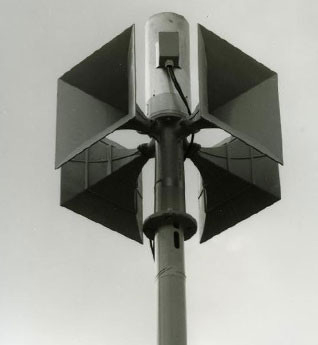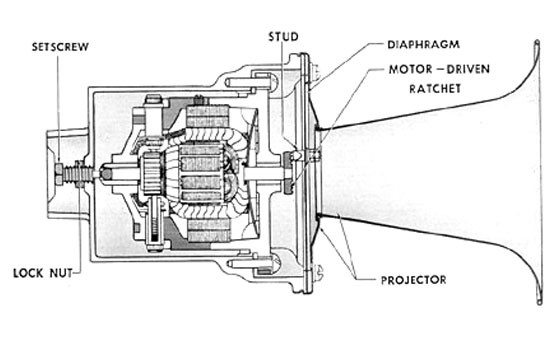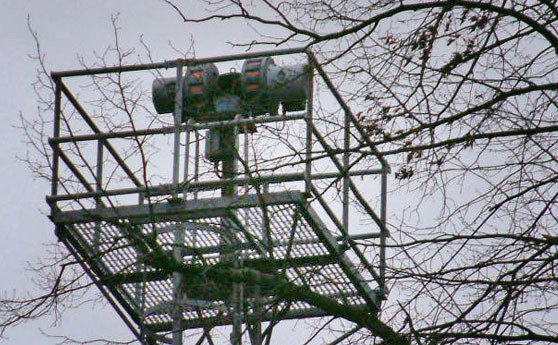Picture: Mechanical Alarm Siren - Motor siren testing, Source: Youtube
In Germany, the mechanical siren is called unit siren E57 (although East Germany and countries of the former Soviet Union used their own type of similar construction during the time of the German Democratic Republic). This alarm siren creates a howling alarm sound that can allegedly be heard across very long distances (it reaches a sound level of 105 dB). In rural areas, the sound of the siren is said to reach 70dB even at a distance of 700m. In cities and industrial areas, these levels can obviously not be reached. One can imagine that the American alarm siren outfitted with a V8 motor was probably quite a bit louder than that.
Mechanical alarm sirens are often mounted on rooftops, high rise buildings and pylons. As these sirens are exposed to the elements and, in some cases, animals (particularly birds), they have to be tested several times a year. The sirens in Switzerland, for example, get tested annually on the first Wednesday in February -- which results in an impressive, country-wide howling concert.
![]() Author: Guido Helbling, Avosound - Last updated November 7th, 2018
Author: Guido Helbling, Avosound - Last updated November 7th, 2018






